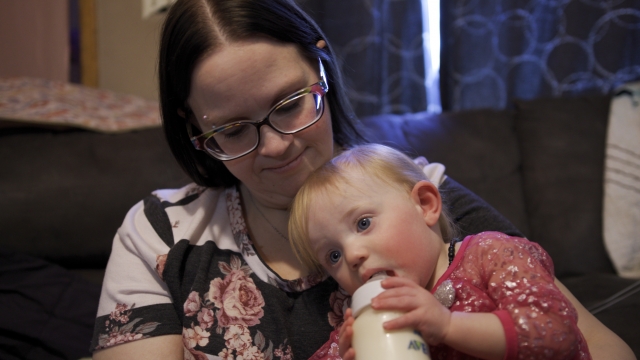On a chilly October night in 2021, Lesa Morrison's back began to ache. She was 36 weeks pregnant with her fourth child, due in November.
"I just thought it was my back because I have a bad back," said Morrison. "And then I was like, hmm, maybe not."
She rushed to the local emergency department at SMP Health - St. Aloisius hospital in Harvey, North Dakota. The ER doctor on duty knew Morrison had a "history of fairly rapid deliveries" from her previous pregnancies, according to medical records obtained by Scripps News. The doctor checked her cervix; she was 2.5 cm dilated, and then her water broke. Morrison was in labor.
She and her husband John Morrison immediately worried about the health risks associated with having their baby a month early, but those fears were magnified when the ER doctor made a decision they weren’t expecting.
He said he was going to discharge Lesa from the ER and John would then have to take her to another hospital 73 miles away.
"They just said, 'Well, you're going to be taking her in your own vehicle,'" said John Morrison. "And I look at the doctor, I'm like, 'Uhhh, no.'"
He asked for an ambulance. He told the doctor he didn't feel it was safe for him to drive his wife in active labor to another hospital more than an hour away.
"I said, "She needs more personnel that knows what’s going on,'" John Morrison said.
The ER doctor, who declined to be interviewed for this story, noted in his records that night, "We do not have a transfer ambulance available at this time; so, transfer by private vehicle with her husband will take place.”
John Morrison says the doctor handed Lesa her discharge papers and said, “You guys, you’ll make it.”
Without any other options, they raced out of the hospital, making a quick stop at home to grab blankets.
“I was so nervous, like I wanted to, like, scream or cry or something. I just was so angry,” said Lesa Morrison.
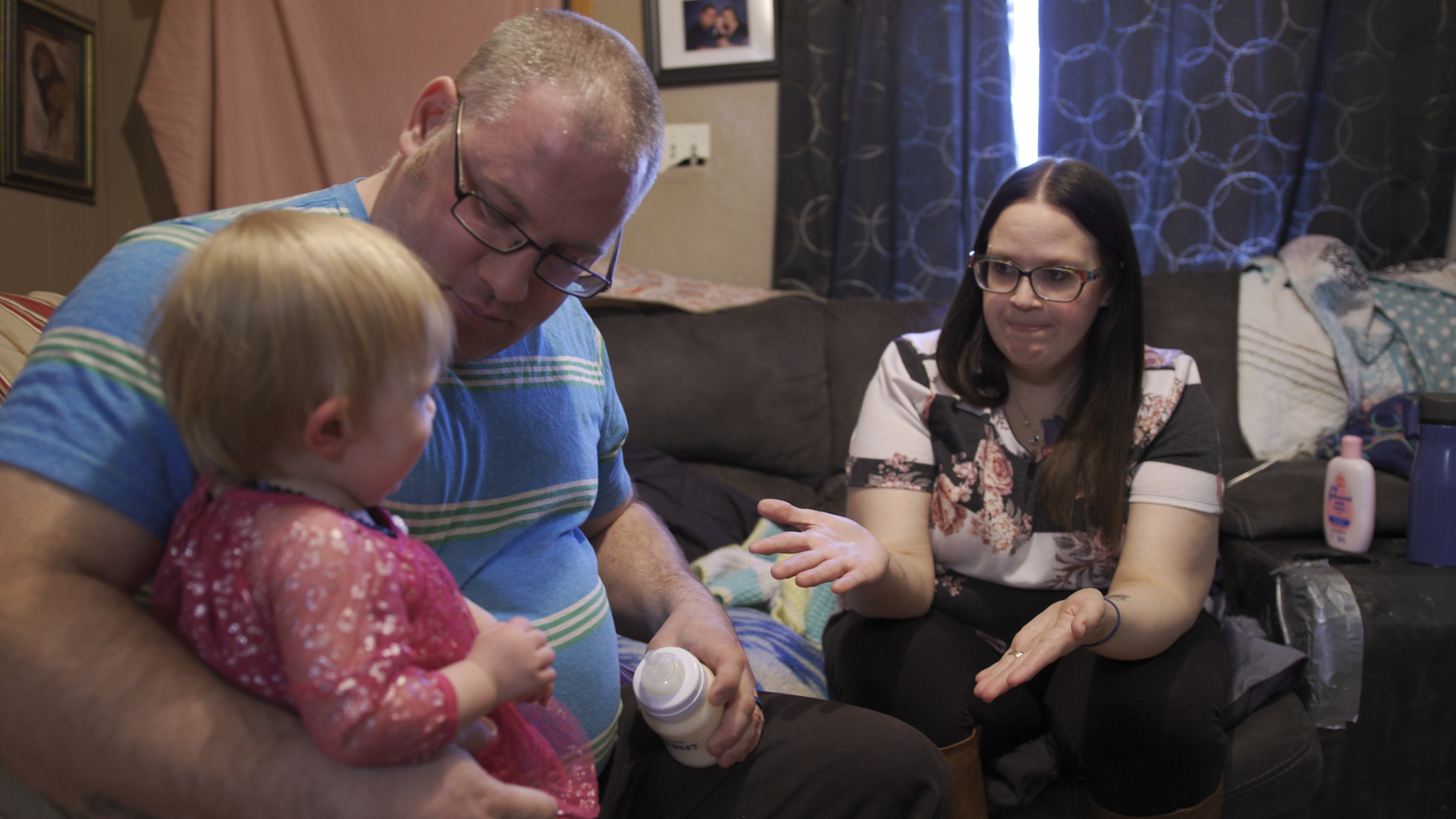
Lesa Morrison, 33, and John Morrison, 34, and their 18-month-old daughter Paizlee Morrison in their home in Harvey, North Dakota. (Zach Cusson / Scripps News)
The doctor’s decision to send Lesa to another hospital more than an hour away triggered a federal investigation by the Centers for Medicare & Medicaid Services (CMS) in 2021. CMS found SMP Health - St. Aloisius violated a federal law known as the Emergency Medical Treatment and Labor Act (EMTALA) when it turned her away.
EMTALA applies to hospitals that receive federal funding through Medicare, which accounts for a majority of U.S. hospitals. The law is supposed to prevent emergency departments from turning away patients who have an emergency condition, such as active labor.
Our Scripps News investigation found Lesa Morrison's case is not unique. We uncovered over 200 incidents across the country in which pregnant patients have been turned away by ER staff, in violation of EMTALA. Our investigation found that pregnant people, as a result, have been put in dangerous situations, giving birth to babies in parking lots, ambulances and in cars on the side of the road. Tragically, some pregnant people and babies died.
Our nationwide analysis spanned dozens of court cases and 11 years of federal data and records. It raised serious questions not only about the limits of EMTALA’s power but also the federal government’s lack of enforcement.
'We didn't make it'
John and Lesa Morrison left the ER at SMP Health - St. Aloisius in their red Suburban at 9 p.m. The only lights on the road were the Suburban’s flashing hazard lights and the headlights from oncoming traffic.
Lesa was still in her hospital gown, sitting in the passenger seat, and she tried not to panic. John was going 85 miles an hour on Route 52, a two-lane highway connecting the small towns in the middle of North Dakota. He remembers watching out for deer and moose.
“Not only did I have my life in my hands, I had pretty much my whole family,” said John Morrison.
As he raced toward the hospital, he called 911 and asked for an ambulance from a nearby town to meet him along the way.
Volunteer emergency medical responders Mandi and Chuck Berger were sitting at home when they heard the call come through a 911 dispatch app on their phone. They jumped in their truck and headed to the highway where they hoped to intercept the Morrisons.
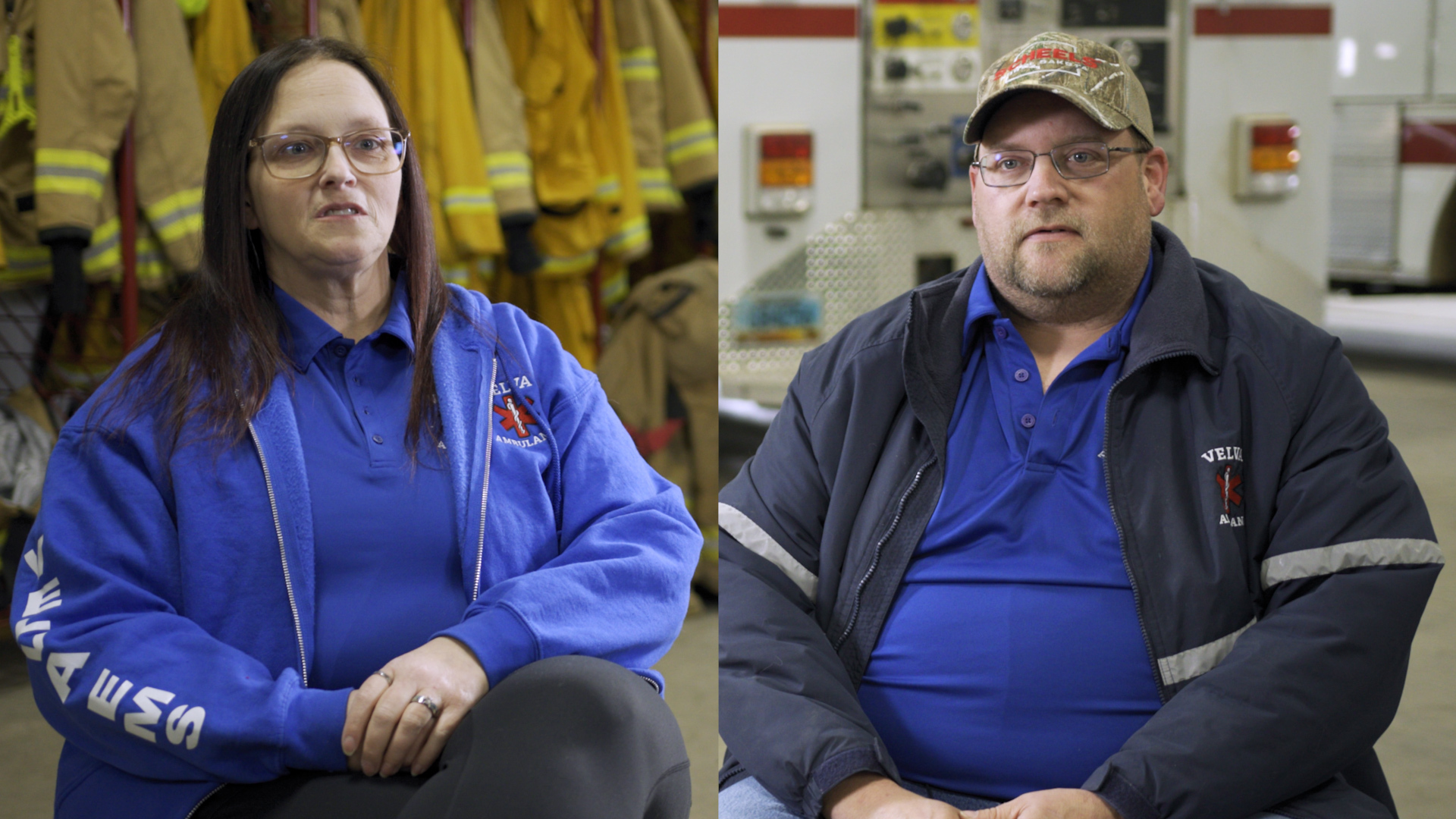
Mandi Berger (left) and Chuck Berger are volunteer emergency medical responders in Drake, North Dakota. (Zach Cusson / Scripps News)
“We get out to the stop sign on 52 and we see a Suburban go by with flashers on,” said Mandi Berger.
They caught up with the Morrisons and started to escort them down the highway, until they saw flashing emergency lights. They believed the lights belonged to the ambulance sent to help them. Everyone pulled over at mile marker 130 on the side of the road.
The emergency lights were not the ambulance; instead it was a McHenry County Sheriff’s vehicle with two deputies who, like Mandi and Chuck Berger, heard the call to help John and Lesa Morrison.
“John got out of the Suburban and he had this frightened deer-in-the-headlights look on his face,” said Mandi Berger. “And he says, ‘Baby's coming.’”
Mandi ran to Lesa’s door and reclined her seat. “I set her foot on my shoulder (and told her), ‘Just breathe’,” said Mandi.
As the baby's head began to crown, Mandi saw the umbilical cord wrapped around the baby’s neck.
“My heart dropped when I saw that,” she said. “If it’s wrapped more than once, this could really be bad.”
She told Lesa to try not to push. With Chuck’s help, Mandi slipped her two fingers under the cord and pulled it over the baby’s head.
Lesa then gave one last push, and the rest of the body came out.
But the baby was unresponsive.
Mandi immediately put the baby on Lesa’s chest, rubbed her back, flicked her feet and tried anything to get the newborn to cry.
A few moments later, just as an ambulance finally arrived, Lesa and John’s newborn daughter, Paizlee, began to cry.
“After it was all done ... it's like, holy s***, we just had a baby on the highway,” said John Morrison.
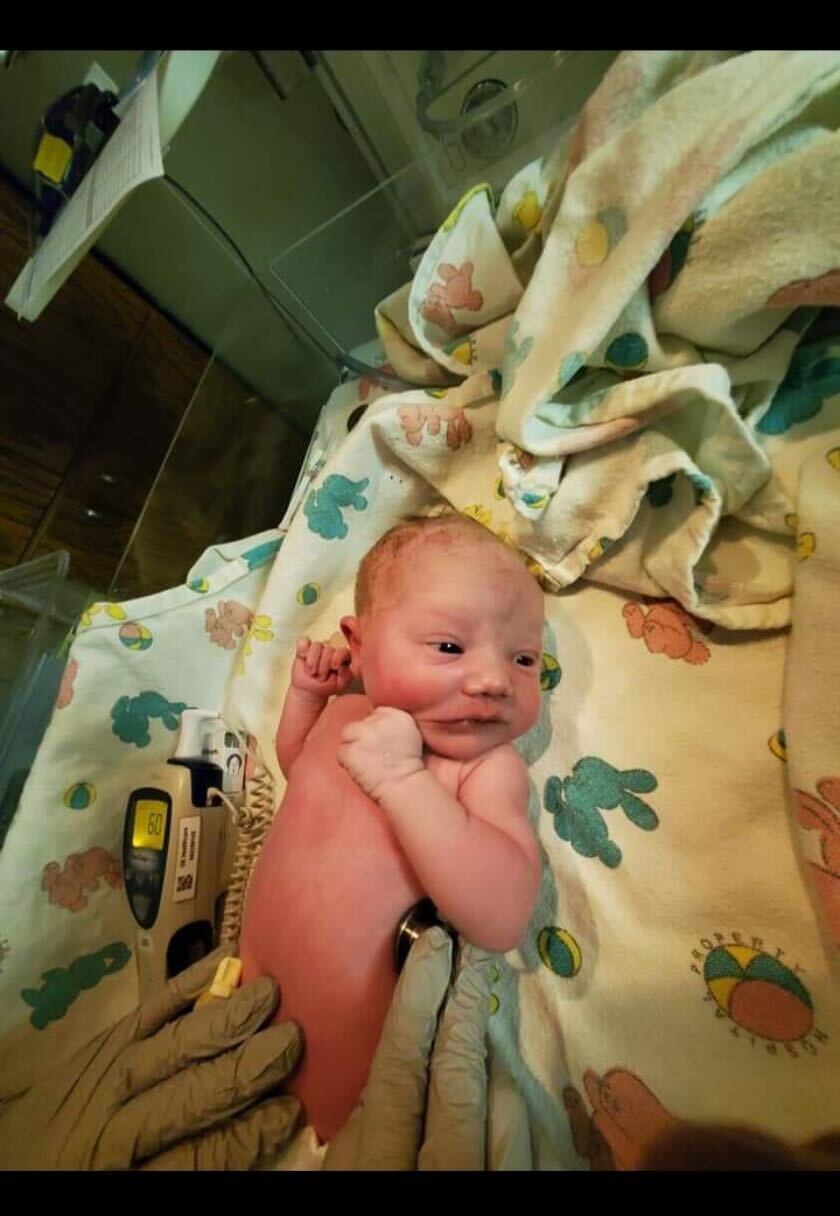
Newborn Paizlee Morrison at Trinity Hospital in Minot, North Dakota, after Lesa Morrison gave birth to her in the front seat of her car on the side of Highway 52. (Photo courtesy of Lesa Morrison)
Violating federal law
The Emergency Medical Treatment and Labor Act was originally enacted by Congress in the 1980s to stop hospitals from refusing emergency care to patients who couldn’t pay, but it also set national standards of care for emergency departments.
That means anyone who walks into an ER must be assessed for an emergency condition, and if a qualified provider determines there is one, they are required by law to provide treatment to stabilize the patient.
“It also changed our cultural expectations, I think, around emergency departments that they have an obligation to us,” said Elizabeth Sepper, a professor at the University of Texas at Austin School of Law.
The law lays out specific protections for anyone seeking care in the ER, including people in labor and their newborns. Labor and delivery units are considered “dedicated emergency departments” under EMTALA because it's an area of a hospital where people in active labor can go to directly seek care for their emergency condition.
“All hospitals were going to be places that would deliver babies because lots of people have babies and in the United States, people have their babies in hospitals,” said Sepper.
Violations are on a spectrum, from simple ones like not hanging proper signage in the ER to potentially life-threatening ones, like in Lesa Morrison's case. Following its investigation, CMS found the doctor at SMP Health - St. Aloisius failed to stabilize Morrison, who was in active labor, and failed to provide an ambulance to transfer her to another hospital.
Documents revealed the ER doctor told CMS investigators the hospital did not have fetal monitoring devices. He had “many years of experience in OB [obstetrics]” and “in retrospect he should have done things differently, but he felt the patient had plenty of time.”
Reporters attempted multiple times to speak with the hospital's current CEO, Ryan Mickelsen, who took over almost two years after Paizlee’s birth. He did not respond to any emails, phone calls or in-person visits. Records show that in the wake of CMS’ findings, the hospital pledged to train staff on EMTALA requirements and audit all patient transfers.
“It kind of gives me closure that they were reprimanded and investigated. You know, how many more people is this happening to?” said John Morrison.
Scripps News wanted to find out that answer, too. We discovered cases involving pregnant patients made up about 15% of all EMTALA investigations.
From coast to coast, Scripps News learned 389 emergency departments have violated EMTALA statutes while attending to pregnant patients, racking up at least 683 federal violations since 2011.
The most common EMTALA violation in the case of pregnant patients was the “failure to provide medical screening examinations.” In some cases, CMS determined patients were discharged from the ER after a medical screening was done by an unqualified nurse instead of a doctor.
Other cases highlighted gaps in awareness or knowledge about the requirements set by EMTALA. We found a variety of hospital staff, like security guards and front desk attendants, turning pregnant people away from seeking care at the ER.
“There's long been a concern that emergency departments try to shift pregnant people out of the ER,” said Sepper. “It would not be surprising at all ... that these cases are representative, but they're not the sum total of the violations.”
Because of the way potential violations are reported, experts say the true number is likely much higher. EMTALA is a complaint-driven system, so the burden of filing a complaint lies with patients who may not even know the law exists and medical professionals who may fear reporting violations.
“I know that there are facilities that don't want to report [EMTALA violations],” said Mary Ellen Palowitch, a former emergency department nursing director and former lead EMTALA compliance expert at CMS. “There's a little bit of fear that if I call you out on dumping a patient on me, the next time I need you to take my patient, you may be less inclined.”
Our investigation found of all the cases that were investigated by CMS, at least 241 involved pregnant people going to the ER for care and being turned away. This included pregnant people who needed to be examined after car accidents; people who were in active labor; people heavily bleeding from miscarriages; and people with ruptured ectopic pregnancies, a life-threatening emergency in which a fertilized egg grows outside of the uterus and requires surgery.
In a 2017 case from Savannah, Georgia, a doctor transferred a woman who was 27 weeks pregnant to another hospital when she was in active labor. The baby was breech; the feet were coming out first. CMS investigators documented the hospital had a neonatologist and a labor and delivery unit available at the time they turned the woman away. One doctor warned it was “unsafe” to transfer the woman, but the patient was transferred anyway.
When the woman arrived at the next hospital, it was too late for an emergency C-section. Records show doctors had to push on the woman’s abdomen to get the baby’s head out of her vaginal canal. The infant had to be resuscitated as soon as it was born.
Another case in Bowling Green, Kentucky, happened in 2021. A woman went to the ER with a ruptured ectopic pregnancy and was at risk of dying from internal bleeding. She was inappropriately transferred to another hospital despite there being “an on-call provider capable of providing stabilizing treatment.”
When we took these Scripps News findings to Elizabeth Sepper, she was alarmed.
“What you're describing are very much the kind of past practices that EMTALA was supposed to do away with,” she said. “My reaction is, why are [hospitals] doing it?”
“All moms and babies deserve to be safe and well cared for throughout pregnancy and delivery,” said Dr. Chris DeRienzo, senior vice president and chief physician executive at the American Hospital Association, a group that represents more than 5,000 hospitals in the U.S. “The practice of medicine is just not black and white. We spend a whole career living in that gray space, and there's a wide spectrum of care needs that moms who are in labor may require.”
He says given that millions of women deliver babies in hospitals each year, he has confidence in the U.S. health system.
'We don't deliver babies here'
Our Scripps News investigation discovered that EMTALA violations involving pregnancy spanned across 44 states and included small hospitals and large ones, in both rural and urban areas. Reporters found hospitals had violated the federal law despite having labor and delivery units in-house and obstetricians on call, but some hospitals did not have maternity wards.
In 2012, a Kentucky nurse went so far as to use her own car to transport a woman who was 28 weeks pregnant to a “local grocery store parking lot” to call an ambulance because the hospital did not provide obstetric care.
In 2014, an ER nurse in rural Mississippi told a 37-weeks-pregnant woman in active labor: “We don’t deliver babies here.” But records show the ER department had an “emergency obstetric kit” on hand. The nurse was suspended for three days.
Palowitch says it used to surprise her that hospitals turned patients away because they didn’t specifically provide OB services.
“If a woman comes in, in active labor, and she is going to deliver, that's part of the ER docs’ training. They're a jack-of-all-trades,” said Palowitch.
A hospital that does not have OB services has a duty to provide care to pregnant patients in the ER. Dr. Alison Haddock, an emergency physician in Houston, says ER doctors are prepared for standard deliveries, but sometimes there can be complications.
“It's a tough situation to be in as an emergency physician when you don't have that OB-GYN backup to help you,” said Haddock, a board member of the American College of Emergency Physicians (ACEP).
Emergency physicians must deliver babies during their residency training, but Haddock says many go on to work at hospitals that have labor and delivery units. It may be years before an ER physician delivers another baby after residency, so ER doctors heavily rely on the availability of OB-GYNs. Which is why she says labor and delivery units closing could be part of the problem.
“As part of our training, we have all delivered babies before … but we also know our limitations," said Haddock.
For years the closure of labor and delivery units has disproportionately impacted rural hospitals needing to cut costs. The American Hospital Association estimates half of all rural hospitals didn’t offer obstetric care in 2020.
While hospitals sacrifice labor and delivery units, people don’t stop having babies. And they increasingly rely on emergency departments to help them, like in Lesa Morrison’s case.
We learned SMP Health - St. Aloisius closed its labor and delivery unit in 2013. But the Morrisons say the ER doctor should have been able to deliver their daughter.
“It's scary. You know, you trust the doctors around here to have your best interests at heart,” said Lesa Morrison.

From left to right, William Morrison (12), Paizlee Morrison (18 months), Hailee Morrison (11), and Dianne Morrison (5) in their home in Harvey, North Dakota. (Zach Cusson / Scripps News)
The cost of being turned away
In most cases Scripps News reviewed, care was delayed, putting pregnant people and their babies in potentially life-threatening situations. But sometimes it was too late. We found since 2011 CMS has investigated at least ten cases in which women or babies died after they were turned away, like in Martha Lynette Daniels' case in March 2021.
Daniels was 35 weeks pregnant with her second child when a relative took her to the local emergency room at Greene County Hospital in Eutaw, Alabama.
Reporters attempted to interview Daniels for this story, but her attorney declined on her behalf. Scripps News obtained records from the CMS investigation and court documents that detailed what happened.
After Daniels arrived at the ER, records show a family member called 911 from the hospital parking lot and said Daniels was “in labor about to have a baby and they telling her they don’t deliver babies.”
When Greene County EMS arrived at the hospital, records show, Daniels was in the passenger seat of her car and “two nurses were standing under a hospital awning some distance away” but “no apparent care was delivered prior to EMS arrival.” A paramedic documented that Daniels was fully clothed and they could see a “bulge in her groin.” They said Daniels “pointed to her groin and advised ‘I already had it.’” A paramedic cut her clothes and found the baby had already been “delivered from the waist up.”
The baby was unresponsive, and paramedics performed CPR. The ambulance then transported Daniels and her baby to a hospital in Tuscaloosa, 36 miles away. CMS records show the baby, whom Daniels had named Maleah, “was pronounced dead upon arrival.”
“That is not what we're supposed to do. That's not what's supposed to happen,” said Haddock. “That was a denial of a medical screening exam.”
A few days after Daniels gave birth, CMS launched an EMTALA investigation. The agency found Daniels was never brought inside the emergency department nor assessed by the hospital's nurses or doctors.
One nurse told investigators they had gone out to Daniels' car to try to get her into a wheelchair before EMS arrived, but the baby was already in her pants. They “did not assess the baby.”
CMS determined “the hospital's failure to provide a medical screening exam, stabilizing treatment and arrange for an appropriate transfer ... posed an immediate and serious threat” to Daniels and her baby.
CMS did not kick Greene County Hospital off Medicare, nor has the hospital been fined. We found enforcement actions are rarely taken against hospitals turning pregnant women away.
No hospital has ever been terminated from Medicare for violations against pregnant women. Instead, CMS works with hospitals to bring them back into compliance with the law.
Palowitch says the agency isn’t interested in terminating hospitals from Medicare because it would likely close that hospital the community needs. But she says more needs to be done to deter hospitals from violating EMTALA, like imposing more fines against them.
CMS can forward EMTALA investigations to the Office of the Inspector General (OIG) within the Health and Human Services Department (HHS). OIG reviews the case and decides whether to fine the hospital.
Scripps News found since 2011, only 12 hospitals have been fined for EMTALA violations against pregnant patients, totaling $632,500.
“Because there aren't that many, I think a lot of facilities are like ... ‘They're not going to pick on us, so I'm not going to worry about it,’” said Palowitch. “If there were more consistent cases ... I think it would make a difference.”
The Office of the Inspector General of Health and Human Services declined our request for an interview. Scripps News sent the agency a list of questions about the lack of civil monetary fines, which it did not answer. Instead, a spokesperson provided a statement saying in part, “HHS-OIG is committed to using its enforcement authorities under EMTALA to help ensure that those essential protections are provided.”
Greene County Hospital CEO Dr. Marcia Pugh did not respond to our requests for an interview. But in response to the Daniels' investigation, records show the hospital agreed to provide an on-site emergency birthing class and EMTALA training to all nursing and medical staff. The hospital also committed to ongoing monitoring by its board to make sure it is following EMTALA.
New challenges
Until recently, EMTALA hasn’t received much national attention. After the Supreme Court overturned Roe v. Wade, the Biden administration reminded hospitals of their obligation to care for pregnant people under the federal law.
It was in response to confusion and fear over the wave of state laws banning and criminalizing abortion; the same procedures involved in abortion care can also be used to manage miscarriages and other potentially life-threatening pregnancy complications.
Since the overturning of Roe, ER doctors have been forced to choose between providing the care EMTALA requires and violating state abortion bans, which can subject them to jail time, heavy fines or the confiscation of their medical license.
“Women will die,” said Palowitch. “That's my fear is that because we have these laws and this legal side and politicians that have now inserted themselves into really a medical decision-making process.”
Last year, EMTALA’s protections for pregnant people seeking emergency care were challenged in the state of Texas for the first time.
A judge in that state ruled when a pregnant person goes to the ER, state law trumps EMTALA. The ruling prohibits CMS from enforcing EMTALA when a pregnant patient claims they were denied an emergency procedure to terminate a life-threatening pregnancy in the state of Texas.
The Department of Health and Human Services is appealing the court's decision that also protects members of the American Association of Pro-Life Obstetricians and Gynecologists (AAPLOG) and the Christian Medical and Dental Association (CMDA).
“This lawsuit was really about whether Texas gets to leave, essentially, health care providers cowering in fear of criminal prosecution or if they have some space to treat patients in emergency situations,” said Sepper. “It's sort of shocking to have EMTALA limited in this way.”
Meanwhile, the Biden administration is raising awareness and urging pregnant people to file complaints with state health departments if they encounter problems in ERs.
In May CMS announced two hospitals in Missouri and Kansas violated EMTALA when they denied Mylissa Farmer an emergency abortion procedure. At 18 weeks pregnant, Farmer's water broke prematurely, and doctors determined the fetus would not survive, putting Farmer’s life at risk. Yet, no hospital would allow doctors to help her, and instead she had to drive almost five hours to a clinic in Illinois to obtain an emergency abortion.
Right place, right time
In February of 2023, the first responders who helped John and Lesa Morrison that October night on the side of the highway saw Paizlee for the first time since they helped deliver her.
“To see her now, it's awesome,” said Mandi Berger. “It's always going to be that one call that I will never forget.”
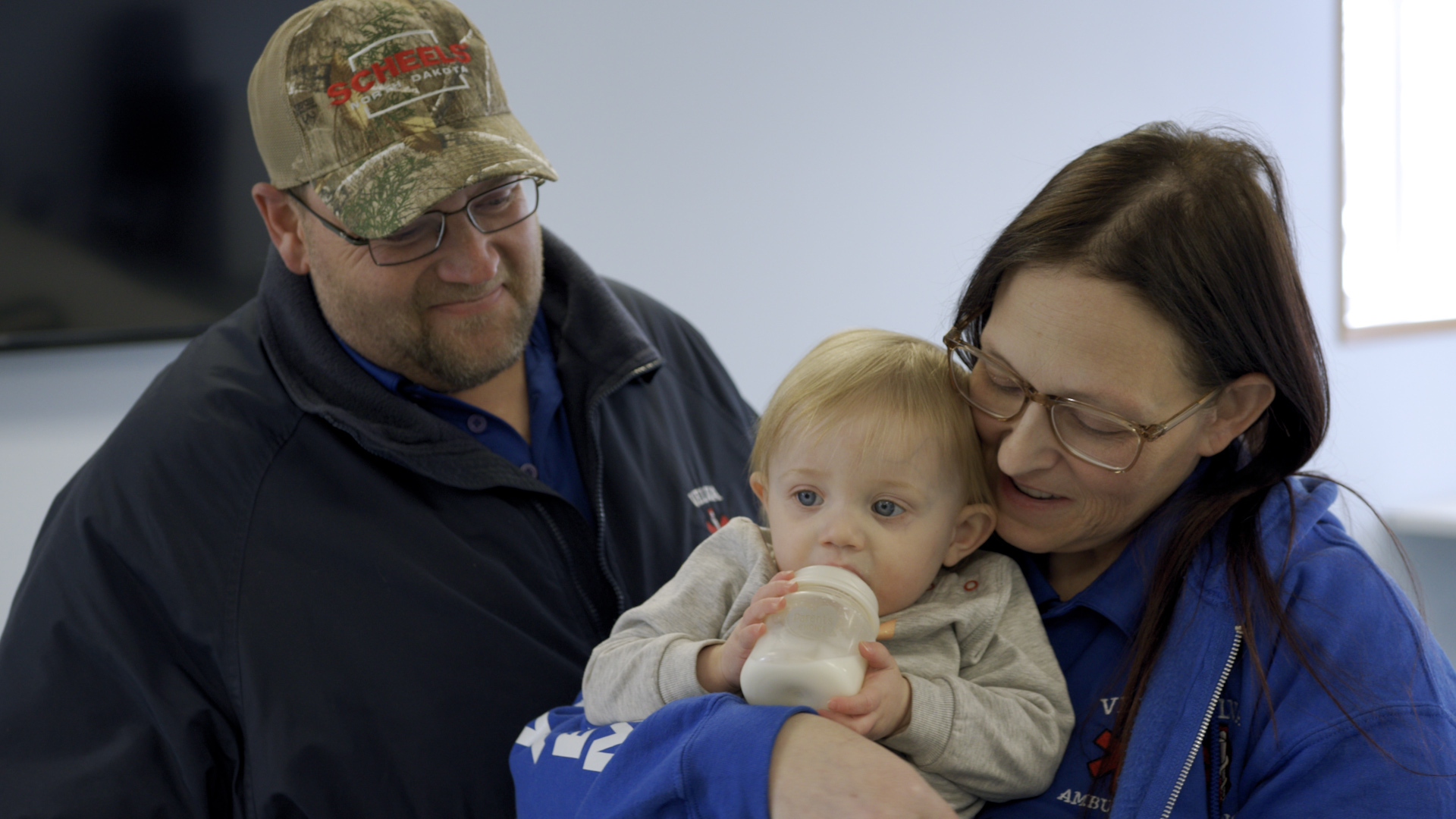
Chuck and Mandi Berger, emergency medical responders, hold Paizlee Morrison for the first time since 2021, when they helped deliver her on the side of the road. (Zach Cusson / Scripps News)
Mandi and Chuck Berger now carry blankets in their truck just in case they ever need to help deliver another baby on the side of a road.
“It just makes you feel like you can't trust the hospital,” said Chuck Berger. “All it takes is a minute, somebody could be dead. And then that's on that doctor's head.”
John and Lesa Morrison don’t plan to expand their family anytime soon.
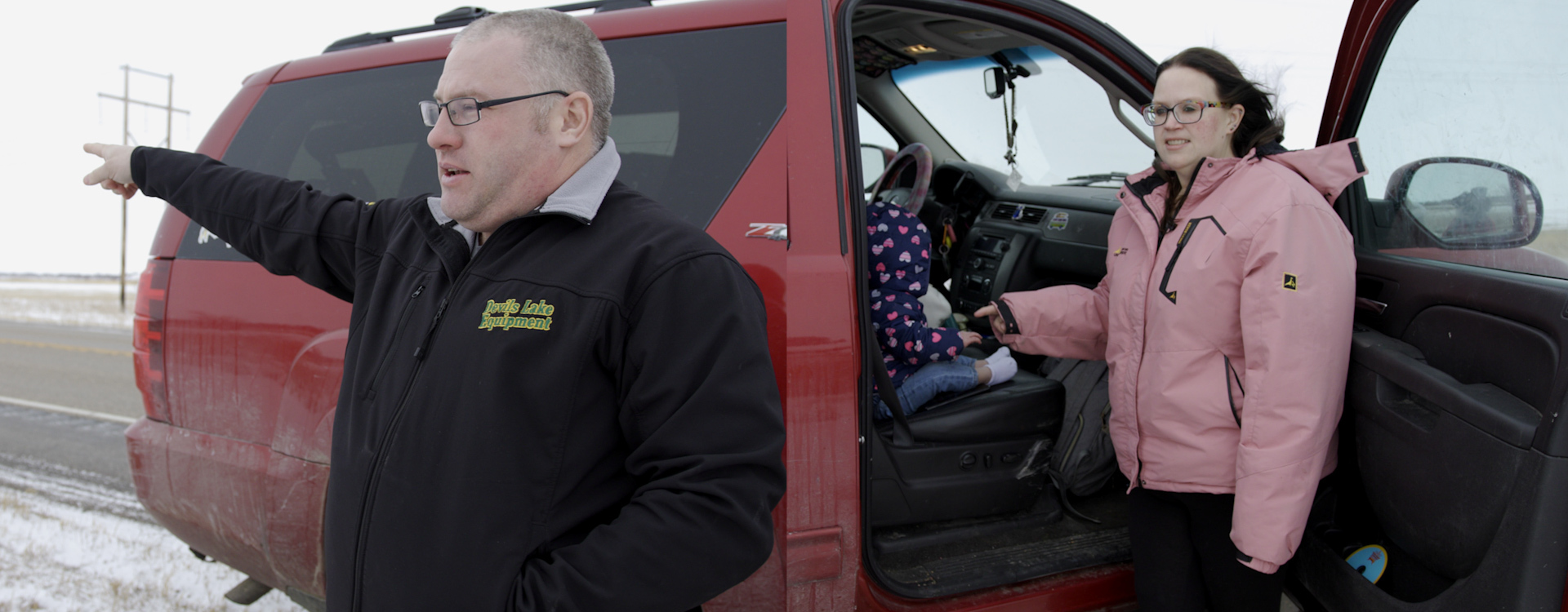
John (left) and Lesa Morrison with their 18-month-old daughter Paizlee Morrison (right) on Highway 52, mile marker 130, where Paizlee was born. (Zach Cusson / Scripps News)
“Usually when we go by the site, like the other kids will be like, ‘Ope, there's where Paizlee was born,’” said Lesa Morrison.
The remote mile marker on Route 52 is now a part of their family story. Paizlee will be two this October.
“Out of all of the kids we've had, she was the scariest,” said John Morrison. "When the baby was born, the cord was wrapped around her neck. And, you know, I wouldn't have known what to do. So, I'm glad we had the first responders."
Visit our GitHub to learn more about our analysis, or to access the data we compiled for this story.
Trending stories at Scrippsnews.com

